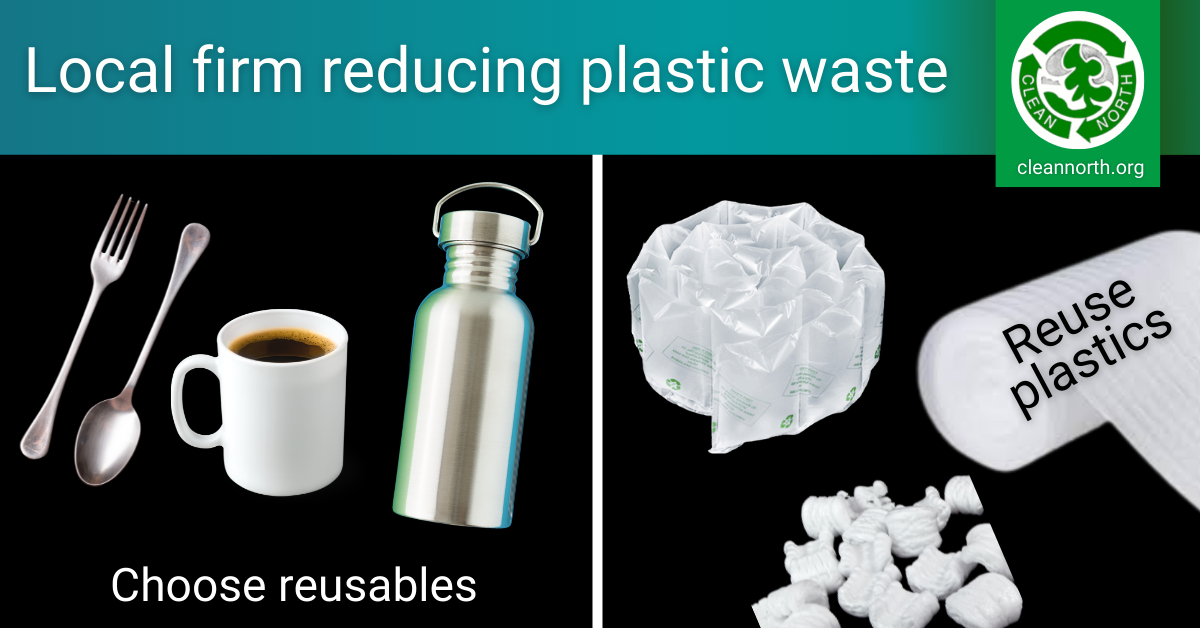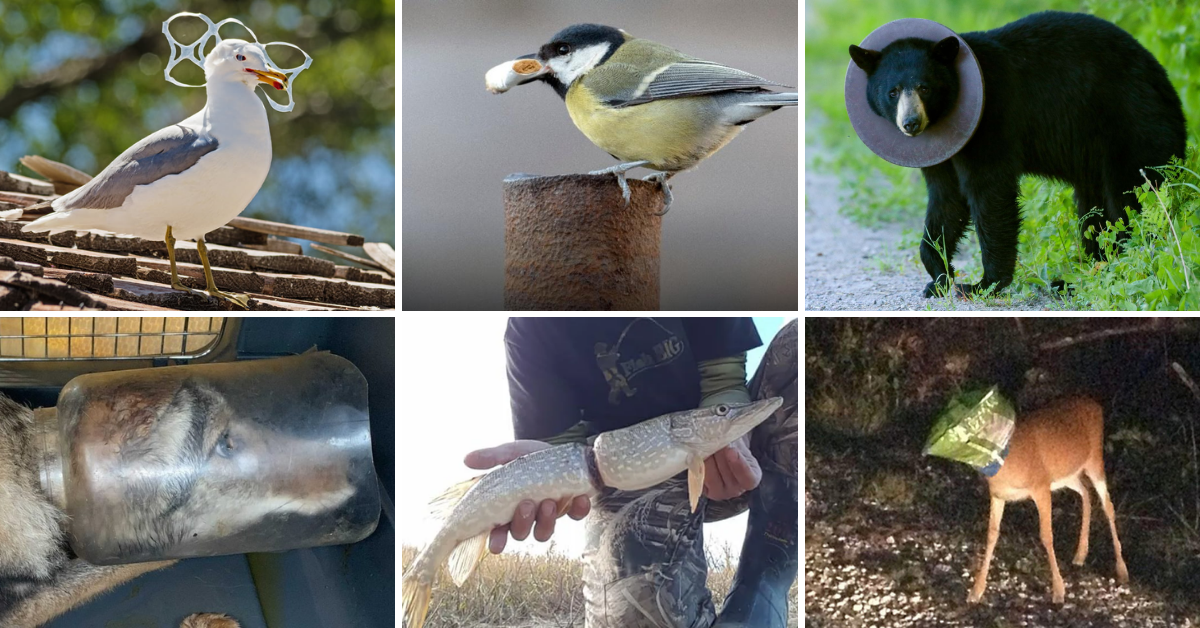
How can businesses and institutions reduce plastic waste? We let Sheri Tuck, a LEED-accredited professional and registered interior designer with local interior design firm Ergo Office Plus, help us count the ways! Her firm took the Plastic-Free Pledge last year, to help slash plastic waste going into our landfill and reduce harm to the environment.
Why pledge to reduce plastic waste?
“As a design firm, we see a lot of plastic waste,” Sheri notes, “for example, packing materials including styrofoam blocks and packing peanuts, bubble wrap, air pillows, and shipping envelopes.
“We’ve always had a strong sustainability focus, and when the city and Clean North launched the Plastic-Free Pledge, we felt that was a great opportunity for us to take it up a notch.”
So where’s a business to start?
A key way Ergo is reducing waste is by collecting clean packing materials and donating to Hogan’s Homestead, a maple syrup producer with a storefront at 536 Second Line West. This outfit accepts packing peanuts, bubble wrap, foam wrap, and air pillows. Items must be clean and free of tape. (Hogan’s used to accept styrofoam blocks but stopped because too many people were dropping off loads contaminated with garbage.)
Sheri is hopeful that Ergo will be able to recycle shrink wrap as well when the city’s revised recycling program launches later next year. And another common packing material may become recyclable as well—an Alberta company that recycles styrofoam may be expanding to Ontario. Stay tuned for that!
Ergo also coaches their clients to reduce plastic waste and be greener in other ways as well. “We follow green design principles such as energy efficiency, low environmental impact, waste reduction, flexible spaces, and healthy environments to reduce the harm to the environment and to people and create sustainable spaces for our clients,” Sheri notes.
Nix the single use plastics
Finding alternatives to single use plastics is another way Ergo has reduced waste, including through:
- Making coffee in the office and providing reusable china mugs for staff and paper cups for guests
- Serving tap water instead of bottled water
- Making their own hand soap with which to refill dispensers rather than having a steady stream of plastic dispensers ending up in the landfull
- Encouraging the use of reusable metal cutlery rather than single use plastic ones
- Bringing a waste-free lunch from home
- Refusing single use straws and coffee stirrers and encouraging restaurants to switch to compostable takeout containers (hard plastic is second best as these can be donated to a food bank; avoid “bioplastic” and styrofoam which cannot be recycled)
Reducing plastic waste hits home
Sheri and her family also took the Plastic-Free Pledge and are working hard to reduce home use of plastics, especially those used once or for just a short time. For example, she’s managed to cut back on plastics in shopping, including by using reusable bags and avoiding products packaged in plastic. Dairy products are the most challenging food group: “Almost all come in plastic!”
She suggests:
- Buy meat from local shops wrapped in paper rather than plastic
- Choose biodegradable toothbrushes (only the bristles are plastic, and the handles can be composted)
- Take reusable metal cutlery on picnics or when travelling or look for biodegradable wooden disposable cutlery
- Seek out sustainable toilet paper wrapped in paper not plastic
- Collect and offer up to others clear plastic salad/berry containers and hard plastic takeout containers (FYI these cannot go in our municipal recycling bins!)
- Don’t buy produce packaged in plastic and bring your own produce bags to the store
- Cut out beverages bottled in plastic
- Never drop any litter, let alone that containing plastic, on the ground or in a lake or river
- Read more ideas here
So what’s the harm from plastic?
The problem with plastic is it can take up to 500 years to break down, and it can contain toxic chemicals and even heavy metals like lead. In the landfill, plastics can leach toxic materials into our groundwater, and when dropped in nature, they can harm the ecosystem and its creatures.

Plastic bags, straws, six pack rings, fishing line, chewed gum, etc. pose a safety risk to wildlife and fish. Wild animals have starved because a jar got stuck on their head or been unable to fly because they’ve become entangled in plastic trash.
And when plastic breaks into tiny bits called microplastics, it poses a different kind of risk. Microplastics have been found in the flesh of fish and even human placentas! This is unlikely to be healthy for either wild creatures or us.
The less plastic we use, the less risk to ecosystems, wildlife, and us.
While producers who use massive amounts of plastic in their products and packaging need to take the lion’s share of the responsibility for our plastic waste problem, we as individuals have power. If each of us does our part, we can have a big impact.
Letting companies know that you are unhappy with their excessive use of plastic and voting with your dollar (buying plastic-free products) also help fight plastic waste.
Want to know more about reducing plastic waste?
Email us at info@cleannorth.org.




